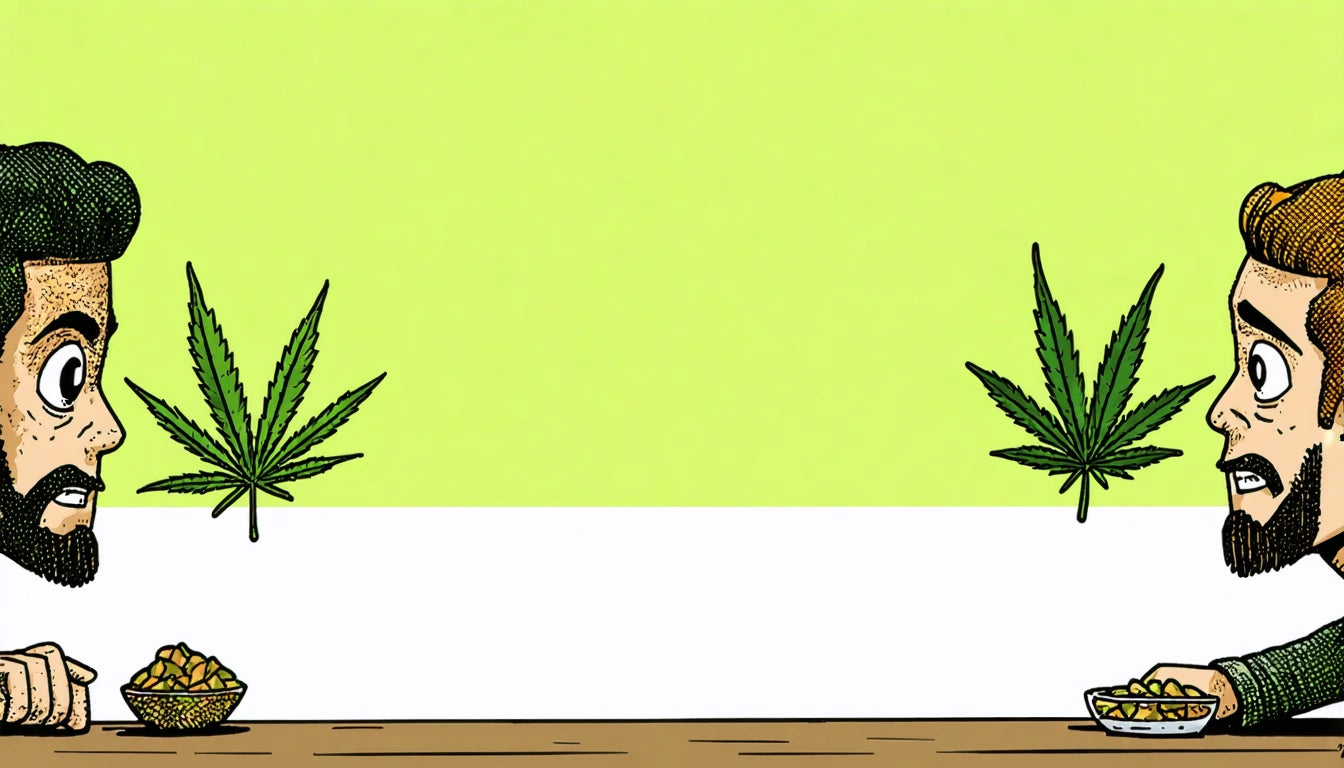Table of Contents
- What Are Hashish and Weed?
- Production Methods: How Hash and Weed Differ
- Potency Comparison: THC and Cannabinoid Content
- Consumption Methods for Hash vs Marijuana
- Effects and Experience: Hash vs Weed High Difference
- Cultural and Historical Context of Hash and Marijuana
- Storage and Preservation Best Practices
- Choosing Between Hash and Weed: Key Considerations
Hashish vs Weed: Understanding the Differences and Effects
Cannabis enthusiasts often debate the merits and differences between hashish vs weed, two popular forms of the same plant that deliver distinctly different experiences. While both come from the cannabis plant, their production, potency, consumption methods, and effects vary significantly. This comprehensive guide explores these differences to help consumers make informed choices about which product might better suit their needs and preferences.
What Are Hashish and Weed?
Weed, also called marijuana or flower, refers to the dried buds of the cannabis plant. It contains varying levels of cannabinoids, including THC (tetrahydrocannabinol) and CBD (cannabidiol), along with terpenes that contribute to its aroma and effects.
Hashish, commonly shortened to hash, is a concentrated form of cannabis made by separating and compressing the resin glands (trichomes) from the plant material. According to this detailed explanation of hash composition, the process creates a potent product with higher concentrations of cannabinoids than regular flower.
Production Methods: How Hash and Weed Differ
The production processes for hash and weed diverge significantly:
Weed Production
Marijuana flower undergoes a relatively simple process:
- Growing the cannabis plant to maturity
- Harvesting the buds
- Drying and curing the flower
- Trimming to remove excess plant material
Hash Production
Hash requires additional processing steps to isolate and concentrate the trichomes:
- Collecting trichomes through sieving, ice water extraction, or other methods
- Pressing the collected resin glands together
- Curing the final product
For those interested in the process, this step-by-step guide on making hash provides detailed instructions on traditional and modern extraction methods.
Potency Comparison: THC and Cannabinoid Content
One of the most significant differences in the hashish vs marijuana debate centers on potency:
Typical THC content in weed ranges from 15-25% in modern strains, though some premium varieties may reach higher levels. Hash, being a concentrate, typically contains 20-60% THC, with some high-quality products exceeding these levels.
This potency difference means that hash typically delivers stronger effects with smaller amounts, making proper dosing crucial for an enjoyable experience. For consumers seeking specific effects, understanding this hashish vs weed high difference is essential for proper consumption.
Consumption Methods for Hash vs Marijuana
The physical differences between hash and weed lead to different consumption methods:
Weed Consumption Methods
- Smoking in pipes, bongs, or joints
- Vaporizing in dry herb vaporizers
- Using in cooking after decarboxylation
Hash Consumption Methods
- Smoking mixed with flower or tobacco
- Vaporizing with specialized equipment
- Dabbing (for certain types of hash)
- Adding to edibles in small amounts
Proper storage containers are essential for preserving both products. Many consumers use airtight glass jars with secure lids to maintain freshness and potency while complying with safety regulations.
Effects and Experience: Hash vs Weed High Difference
The effects of hash vs weed differ not just in intensity but also in character:
Weed typically provides a more balanced experience with effects that develop gradually. The presence of plant material and the full spectrum of cannabinoids and terpenes creates what's often called the "entourage effect."
Hash generally delivers a more intense, rapid onset of effects due to its concentrated nature. Many users report a clearer, more cerebral high with certain types of hash, though this varies by production method and source material.
As explored in this comparison of cannabis effects, individual responses to different cannabis products can vary widely based on personal physiology, tolerance, and consumption method.
Cultural and Historical Context of Hash and Marijuana
Understanding the hashish vs marijuana difference requires acknowledging their distinct cultural histories:
Hash has deep historical roots in regions like Morocco, Lebanon, Afghanistan, and India, where traditional production methods have been passed down for generations. In these regions, hashish has been used for centuries in religious, medicinal, and social contexts.
Marijuana flower has been used globally but gained particular prominence in Western cannabis culture during the 20th century. The cultivation of specific strains for potency and effect has evolved significantly in recent decades.
These cultural differences continue to influence how these products are perceived and used today, as detailed in this exploration of cannabis cultural evolution.
Storage and Preservation Best Practices
Proper storage is crucial for maintaining the quality of both hash and weed:
- Both products benefit from storage in cool, dark places away from direct sunlight
- Airtight containers help preserve terpenes and prevent oxidation
- Hash can be wrapped in parchment paper before placing in containers to prevent sticking
- Weed requires moderate humidity control to prevent mold while avoiding excessive dryness
Choosing Between Hash and Weed: Key Considerations
When deciding between hash vs flower, consider these factors:
- Experience level: Newcomers might prefer starting with lower-potency flower before exploring hash
- Desired effects: Consider whether you're seeking the full-spectrum experience of flower or the concentrated effects of hash
- Consumption preference: Your preferred method of consumption may determine which product is more suitable
- Availability: In some regions, quality flower may be more accessible than hash, or vice versa
- Price and value: While hash is typically more expensive per gram, its higher potency means less product is needed for similar effects
Understanding what is the difference between hash and weed allows consumers to make choices aligned with their preferences, tolerance, and desired experience. Both products offer unique benefits and experiences within the broader cannabis landscape.











Leave a comment
All comments are moderated before being published.
This site is protected by hCaptcha and the hCaptcha Privacy Policy and Terms of Service apply.